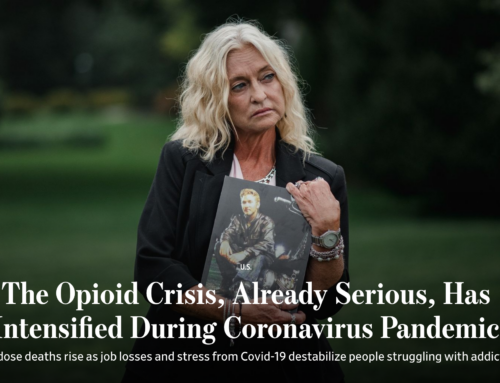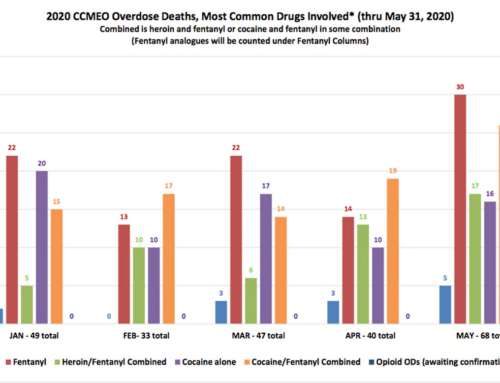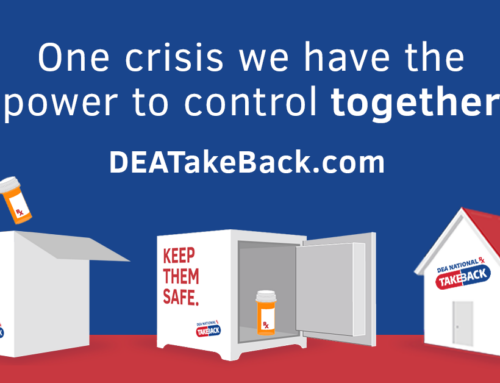The super-potent drug has been the leading killer of the opioid epidemic — now it’s finding its way into illegal stimulants, and the death toll is rising
Right now, the United States is grappling with a deadly opioid epidemic, and at the center of the crisis is illegal fentanyl, a painkiller found in hospitals that is also manufactured for the black market in places like China and South America.
Over the last few years, this illegal fentanyl has started to make its way into heroin and other opiate-based drugs, such as oxycodone. It’s a cheap alternative to those drugs, and since it offers a similar sedentary high, drug traffickers at every level of the chain began cutting it in as an adulterant. But the synthetic opioid, which is 25 to 50 times more potent than heroin, is now popping up in an unsuspected place: the country’s cocaine supply.
The combination is killing people: In New York City, for example, 37 percent of cocaine-related overdose deaths reported in 2016 involved fentanyl. That year, its northern neighbor, Connecticut, recorded 143 overdose fatalities where fentanyl and cocaine were present — in 2015, there were only 42. Just last month, four people died as a result of fentanyl-laced cocaine in San Diego, California.
“Part of the challenge is just how potent fentanyl is that even a small amount, particularly in someone who doesn’t regularly use opioids, can be so deadly,” Dr. Sarah Wakeman, an addiction medicine physician based in Massachusetts, tells Rolling Stone.
An eye-opening JAMA Psychiatry study published in May revealed a dramatic increase in overdose deaths involving synthetic opioids, primarily street fentanyl. In 2010, there were around 3,000 such fatalities, but in 2016, that number jumped to more than 19,000. More surprisingly, cocaine was involved in about 22 percent of those overdose deaths, according to the study’s findings.
“People using cocaine my not have any experience in using opioids, so they have no personal tolerance to the effects,” study co-author Wilson Compton, deputy director of the National Institute, tells Rolling Stone. “And we know that people who are drug naive are much more likely to have an overdose because their body hasn’t adjusted and adapted to it.”
So why is fentanyl showing up in cocaine? No one knows, but there are plenty of theories. “Lots of experts are being asked this question and making guesses,” Keith Humphreys, Stanford professor and drug policy expert, tells Rolling Stone. “But they are all guesses.”
There are two prevailing hypotheses: Malicious intent and improper packaging. On one side, some officials, including law enforcement agents and first responders, suggest that dealers are intentionally cutting fentanyl into their cocaine supply. Fentanyl is, after all, a cheaper substance, which means drug cartels can stretch out their product by mixing in the synthetic opioid and still yield the same street price, according to experts.
“It’s quite possible that this is happening way up stream over the head of dealers,” Humphreys tells Rolling Stone, “and it’s something higher up in the supply chain that isn’t very well understood.”
These experts also claim that adding fentanyl to cocaine would allow cartels to get drug users hooked to a more addictive substance, thus expanding their opioid market. But that’s a risky move on the dealers’ part — and it also makes no sense, says Tino Fuentes, a harm reduction and overdose reversal specialist. Even a small amount of fentanyl can cause a user to have a fatal overdose, he and other experts argue.
“Nobody wants to kill off their customer. Nobody’s trying to put fentanyl in their shit to get their coke customers [to switch] over to heroin when their business is coke,” he says, especially since there’s a chance that combination could kill them. The more likely culprit, he continues, is accidental cross-contamination.
It goes like this: Dealers rush the cleanup, sloppily wiping down the area with a rag, which means traces of fentanyl remain. Then they begin to cut and package another product — in this case, cocaine — on the same table, with the same tools.
“They’re not cleaning the scales. They’re not cleaning the grinders. They’re not cleaning the strainers,” he tells Rolling Stone. “So whatever’s left there is going to be picked up in the first batch of coke.” So the cocaine becomes contaminated, Fuentes says, unbeknownst to the street dealers selling the product to their clients.
And that’s the key part here: Most drug dealers, experts say, don’t know that the substance they’re distributing is laced with fentanyl.
“The street dealers are just as clueless as the users are at this point,” Dan Ciccarone, a public health researcher who studies heroin and fentanyl, tells Rolling Stone.
But despite their differing opinions, the experts do agree on one point: The problem is only getting worse. Of the cocaine seized by Massachusetts state police last year, for example, 199 samples were found to contain fentanyl — nearly three times the amount recorded in 2016. And in a March news report, the U.S. Drug Enforcement Administration told NPR that fentanyl was found in seven percent of the cocaine seized in New England in 2017, a 3 percent uptick from the year prior.
“It’s something we have to be very concerned about,” Ciccarone tells Rolling Stone. “[We have] to keep following the data.”
Lawmakers, for their part, have been trying to curb the death toll, with the department of Health and Human Services giving out over $1 billion in grants last month to individual states to address the epidemic. Some localities are piloting prevention and education programs to tackle the climbing rate of fatal overdoses, as well. In May, the New York City Health Department launched a weeks-long campaign to inform drug users hitting up bars and clubs in Manhattan’s Lower East Side that their cocaine could potentially be laced with fentanyl. Lab tests conducted by the New York City Police Department found that one percent of cocaine analyzed between January and March of last year contained fentanyl.
As part of the campaign, city health officials distributed coasters and posters with drug safety tips throughout Lower East Side venues. They also supplied naloxone, the life-saving overdose drug, and trained workers on how to administer the medication.
“We hope that this [initiative] helps people protect themselves because ultimately our job is to keep people alive,” says Dr. Denise Paone, director of research and surveillance at the New York City Department of Health and Mental Hygiene.
Drug users, for the most part, aren’t seeking out fentanyl-laced cocaine, experts tell Rolling Stone. Nor, like the dealers, are they aware that the product is even contaminated. So when they use, they expect the same high they always get, but instead, experience something far, far worse.
“More and more, we’re hearing stories of people who either have only used cocaine and are not a person who uses opioids,” says Wakeman. “Or who says ‘I bought what I thought was cocaine,’ and they suffer an overdose and it turns out to be fentanyl.”
ORIGINAL ARTICLE: https://www.rollingstone.com/culture/culture-features/fentanyl-cocaine-how-contamination-happens-735155/





